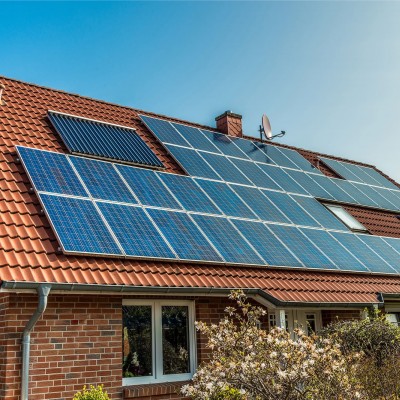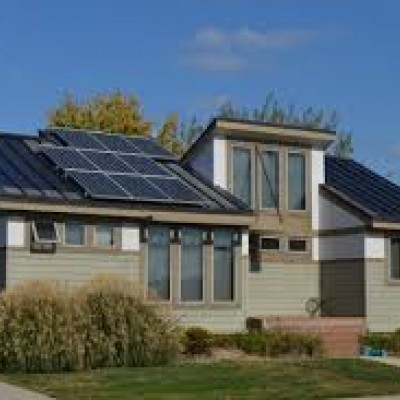The Grid is at a Fork in the Road
Solar PV and batteries will be part of the grid of the future. But what part? And what sort of grid? The answers are as yet uncertain, but decisions made today will set the grid’s evolution on a trajectory from which it will be harder to course correct in the future. And that evolution and trajectory could differ from one state to another. In creating our most recent report on The Economics of Load Defection to accompany our original report on The Economics of Grid Defection, we sought to establish when, where, and how distributed solar-plus-battery energy storage would challenge the traditional utility business model.
After addressing the question of when these technologies will represent an economic choice for customers, we set out to explore how they would fit into the grid of the future. We have never advocated for grid defection, and we’ll be the first to say that grid defection leads to suboptimal outcomes for customers and utilities alike. However, we might be making choices today that will lead the electricity system in that direction. Conversely, other decisions will make it easier for customers to integrate these distributed energy resources into the grid. Put simply, we’re at a fork in the road and it’s time to make a decision: what kind of electricity grid do we want?
A SPECTRUM OF CHOICES
For customers, it’s not a binary choice, but really a spectrum of options that ranges from full grid service to full grid independence. The options in between are the important ones that so desperately merit our attention today. As the costs of solar PV and batteries decline, customers will invest in systems that best suit their needs and their interests. For most customers, this means reducing their electricity bills, and improving the quality and resilience of their electric service.

Customer interests and grid interests do not need to be at odds with one another, but in most of the U.S. today, they are. Utilities are regulated to earn more by building more, and customers are incentivized to reduce their costs. Unaddressed, this dichotomy will only worsen: utilities will continue to find ways to invest in new infrastructure, and customers will continue to find new, increasingly technology-enabled ways to reduce costs.
THE FORK IN THE ROAD
Rapidly declining costs for solar PV and battery storage are forcing the issue. The costs for these technologies are declining every fiscal quarter, and the markets for these technologies are growing just as fast. In 2014, the U.S. residential solar market grew 51 percent over the year prior, with over 1,200 MW of new solar electric capacity. In a regulated utility environment where rate cases take between nine months to a year, and integrated resource plans can take almost twice as long, there is no time to delay.
One road will be paved with actions meant to preserve the status quo, or just plain inaction— things like increasing fixed charges, limits or elimination of customer export pricing or ability, and increasing build-out of large-scale central generation. Down this road are pricing structures, business models, and regulatory environments that will inadvertently favor customer adoption of non-exporting solar and self-consuming solar-plus-battery systems. These outdated models and defensive measures could lead us to grid defection for customers that are able, and a fragmented, higher-cost grid for everybody else.
But fortunately, there’s an alternative. Down the other road are pricing structures, business models, and regulatory environments designed to integrate distributed energy resources such as solar PV and batteries—and their inherent costs and benefits—into the functioning of the grid. In some contexts, solar PV and batteries can lower systemwide costs, contributing to the provision of reliable, resilient, flexible, low-carbon electricity supplies and enhanced customer choice. In this future, grid and customer-side resources work together as part of an integrated grid, with the potential to lower costs and improve the performance of the system to everyone’s benefit. The design of these new systems will require experimentation, and there is no time to waste.
BUILDING THE GRID OF THE FUTURE
Having determined the magnitude of the potential consequences as we did in our report onThe Economics of Load Defection, the important question now is how utilities, regulators, technology providers, and customers might work together to create the new rate structures and business models we’ll need to build the integrated grid of the future; one that delivers value and affordability to customers and society. Excitingly, some organizations in the electricity industry are beginning to consider these choices and the strategic implications they carry. For example, New York’s Public Service Commission noted in their Reforming the Energy Vision Regulatory Policy Framework and Implementation plan order that:
Utilities, and this Commission, could respond [to the challenges facing the industry] by clinging to the traditional business model for as long as possible, relying on protective tariffs, regulatory delay, and other defenses against innovation.
Alternatively, we can identify and build regulatory, utility, and market models that create new value for consumers and support market entrants and this new form of intermodal competition—in other words, embrace the changes that are shaking the traditional system and turn them to New York’s economic and environmental advantage.
We decisively take the latter approach.
The stakes are high, both for societies that rely on low-cost and reliable electric power as the engine of economic growth, and for the planet that needs a lower carbon-intensity fuel source if the worst effects of climate change are to be averted. Given the time it will take to identify, demonstrate, and scale effective solutions, there is no time to waste. Today, the road towards an integrated grid is the one less traveled. But it is for this very reason that RMI is working with leaders in New York and elsewhere, through our Electricity Innovation Lab, to collaboratively develop the solutions—including performance-based regulations, advanced rate designs, and new business models—that will lead us down the road toward an integrated grid. We welcome those who will join us on this most important quest to build the grid of the future.
First image courtesy of Shutterstock.
Originally published on RMI Outlet. Reprinted with permission.



